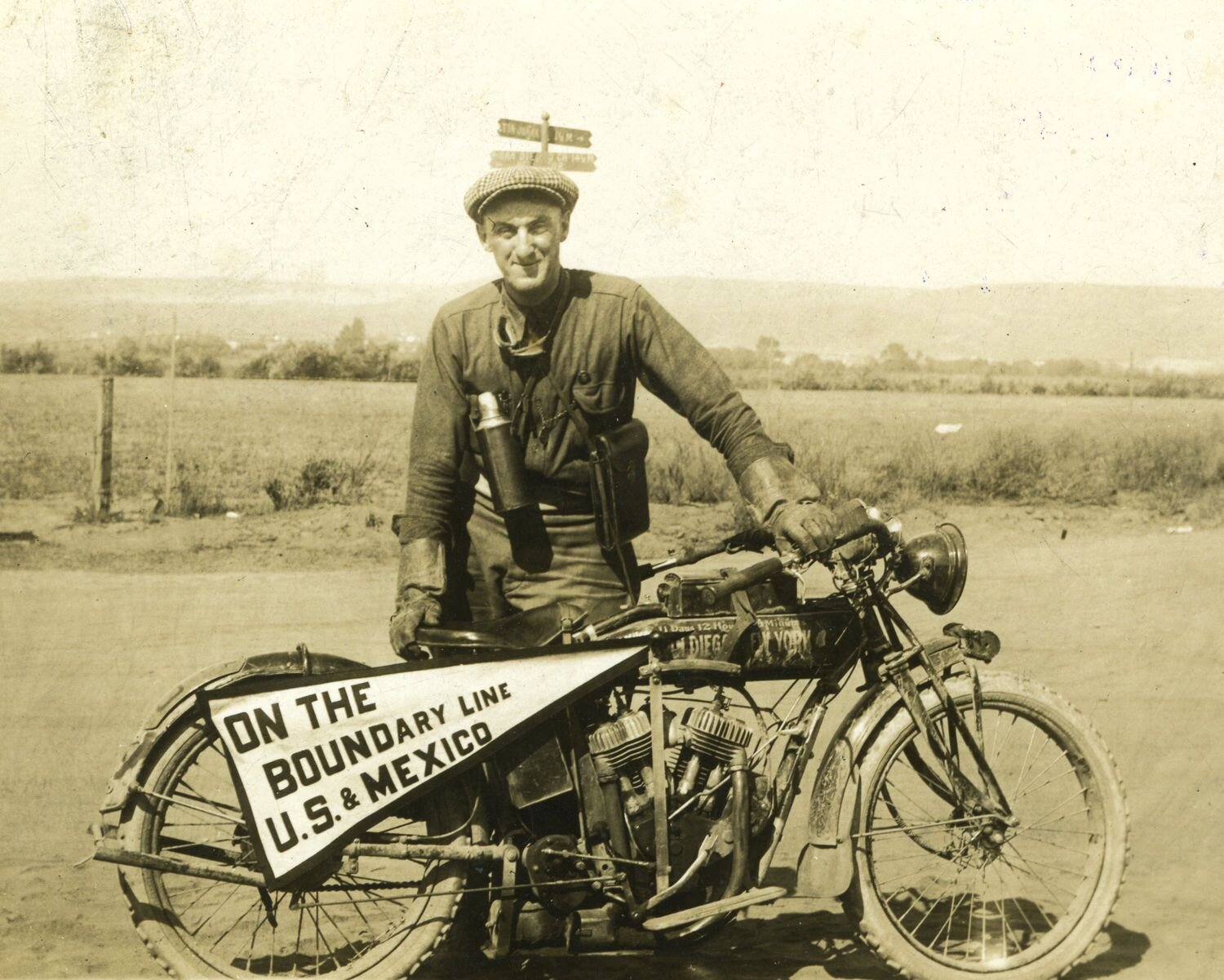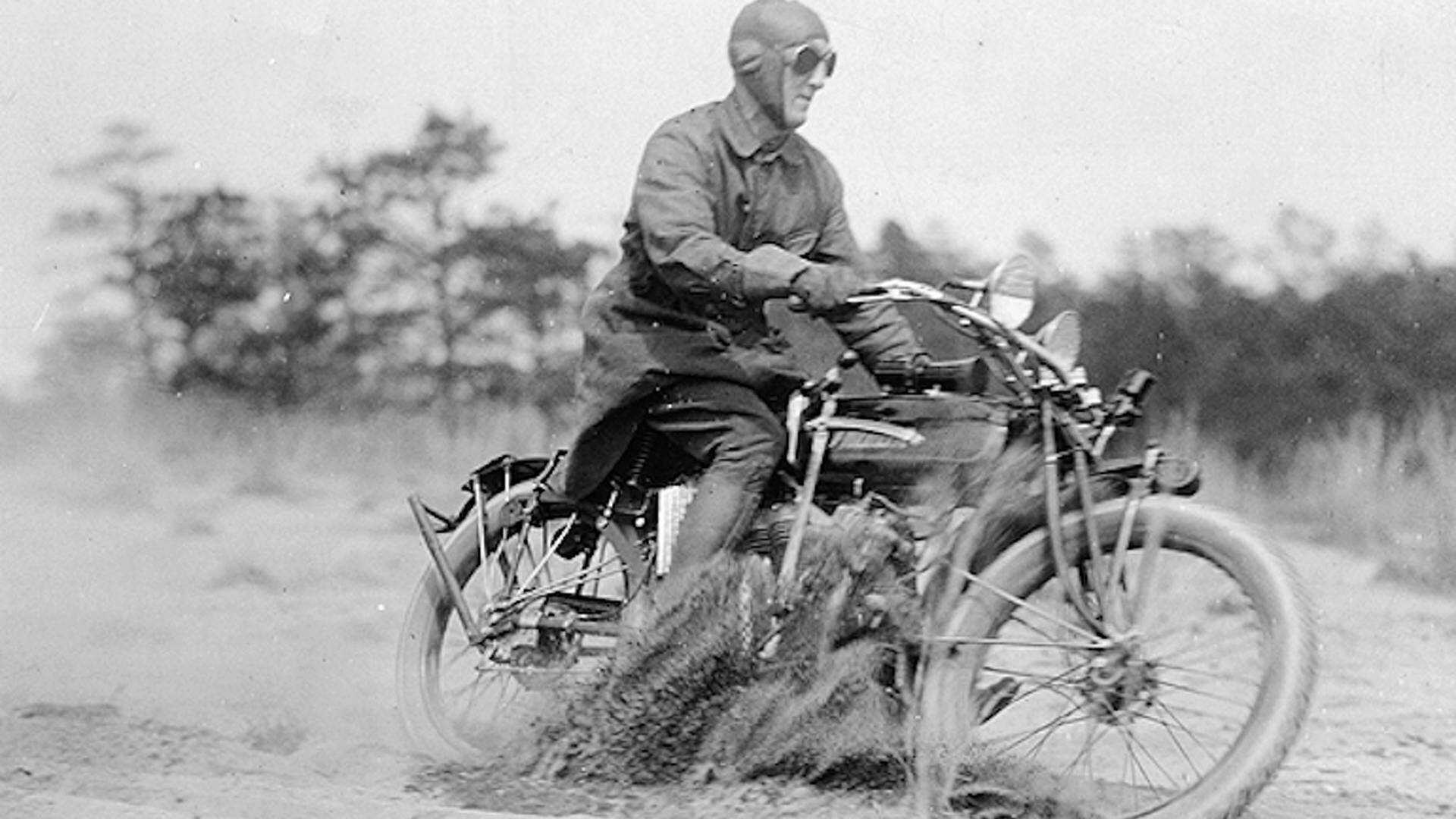‘Cannon Ball’ Baker – a true high-powered hero
/He started racing bicycles … and then went into record-setting with motorbikes and cars. Ultimately, his name is remembered through an unofficial, unsanctioned car race that rebels against authority.
MANY big name start-ups in the automotive industry began with bicycles: So it went with Erwin Baker, a man who became known internationally as ‘Cannon Ball Baker.’
Born March 12, 1882, in a tumbledown log cabin near Lawrenceburg, Indiana, Baker was a sickly youth and an indifferent student. His parents worried over his future and wondered if he might even survive into adulthood. No one could have possibly guessed that Baker would become an internationally-acclaimed celebrity who inspired countless imitators.
His family moved to Indianapolis shortly after Baker turned 12. To supplement his father’s meagre income, before he’d turned 15 birthday Baker went to work toiling in 10 hour shifts at the Indianapolis Drop Forge Company. The hard work transformed the scrawny boy into a sturdy man who craved a hearty lifestyle. In 1905 Baker joined a traveling acrobatic vaudeville act. He entertained audiences by beat punching bags with his feet while standing on his head and using his head as a battering ram to shatter various items.
To earn extra income, and to fuel his passion for the thrill, he began bicycle racing. In 1906 he purchased an Indian motorcycle and begin racing on the board track circuit. The long string of record setting finishes, and his natural talent as a showman, earned notice from Indian and in 1909, Baker was offered a position with the factory Indian motorcycle racing team. His first race as a company representative was at the inaugural event at the Indianapolis Motor Speedway on Aug. 14, 1909.
Conditions at the new Speedway were less than ideal. The surface of the track was crushed limestone with a thin coating of oil. It was deemed treacherous by automobile drivers. For motorcyclists accustomed to racing on surfaces of hardpacked beach sands or board tracks it had the potential to be deadly at high speeds. As an added hazard there were sharp rocks bound to destroy tires. Thirty riders entered, four finished. Baker claimed first prize. G.H. Westing Company, the sole distributor of Indian motorcycles in central Indiana, was quick to capitalise on the success with an array of advertisements.
While the rest of the factory team was board track and beach racing to promote the company, Baker was given a free hand to develop publicity events. Resultant stunts included racing passenger trains between towns. Bear in mind, these were days when roads were little more than frontier era trails pocked with mud holes and rocks.
George Hendee, co-founder, and president of Indian, was ecstatic about the publicity. In 1912, Baker was tasked with staging a promotional tour of South America. As export sales of Indian soared, the tour was deemed a success.
For Baker it was a heady adventure, a 14,000-mile cross country tour of South and Central America as well as Jamaica and Cuba. Never one to rest on his laurels, a few months after returning to the United States he became the first man to cross the United States on a motorcycle. Then he set a record for miles covered per day on a motorcycle on a ride from Vancouver, British Columbia, Canada, to Tijuana, Mexico.
These events sold Indian motorcycles and transformed Baker into a celebrity. In May of 1915 he moved from motorcycles to automobiles when commissioned by Harry C. Stutz, founder of the Indianapolis-based Stutz Motor Company, to drive coast to coast as a promotional stunt for the new Bearcat model.
Stutz received a tremendous return on investment as Baker arrived in New York City after 11 days, seven hours and 15 minutes, a new record for a solo driver. Newspapers in the city proclaimed him ‘Cannonball’, a reference to a record-setting train. Baker ever the showman quickly recognized the value of the name and copyrighted it as ‘Cannon Ball.’ The following year he bested this record by four days, this time in a Cadillac.
Building on his successes, He began offering his services to other automobile manufacturers with a “no record, no money” guarantee. Nash, Lexington, Willys St. Claire, Franklin, and Graham-Paige were counted among the companies that hired Baker to boost sales through the setting of records and the subsequent garnering of headlines internationally.
Promoters in Australia chose two cities and challenged Baker to ride between them on an Indian motorcycle. He accepted the challenges and, in each instance, set new records. For Oldsmobile, he drove a sedan coast to coast in America in high gear. In 1924, to promote Gardner automobiles, he made a North American transcontinental run in the dead of winter. To promote Rickenbacker, he started in Vancouver, British Columbia, and ended in Tijuana, Mexico. In 1928 on a run from New York to Chicago, he bested the 20th Century Limited locomotive that was promoted as the “pride of the railroad.” For Buick, he drove a two-ton truck loaded with Atlantic Ocean water to San Francisco in just under six days. Then in 1933 he established a record that stood for 40 years, a 53-hour solo drive across the United States from coast to coast.
When he was not setting records, Baker was racing. At the behest of Henry Ford, a pioneer automobile racer himself, Baker drove a Frontenac at the Indianapolis Motor Speedway in 1922. Despite an array of mechanical and tire issues that resulted in numerous pit stops, Baker finished the 200 laps in 11th place. Not surprising, in 1948 when NASCAR was established, Baker accepted a position as commissioner.
Though his record setting days were behind him, Baker continued to race and test new cars all through the 1950s’. Then, on May 19, 1960, he collapsed from a heart attack and died at Community Hospital in Indianapolis, Indiana. The monument at Crown Hill Cemetery in Indianapolis that towers over his grave notes that here lays Cannon Ball Baker. In 2017, an Indiana state historical marker commemorating "Cannon Ball" Baker was installed by the Indiana Historical Bureau in front of Baker's home at 902 East Garfield Drive in Indianapolis.
The most enduring homage paid to the legendary record setter was one many have heard about; the Cannonball Run. The initial Cannonball Run (named in a nod to the exploits of Cannon Ball Baker) in 1971 was more a protest of the newly implemented 55 mile per hour national highway speed limit than a race.
Organised by automotive journalist Brock Yates, at the end of the event he thought it might be a good idea to do it again and compete with other drivers, and The Cannonball Run was officially established. The full name of the race was the "Cannonball Baker Sea-to-Shining Sea Memorial Trophy Dash." Many people referred to it as the "Cannonball Dash," and it has since become most familiar as "The Cannonball Run" due to the movie series about the race.
Written by Jim Hinckley of jimhinckleysamerica.com

















